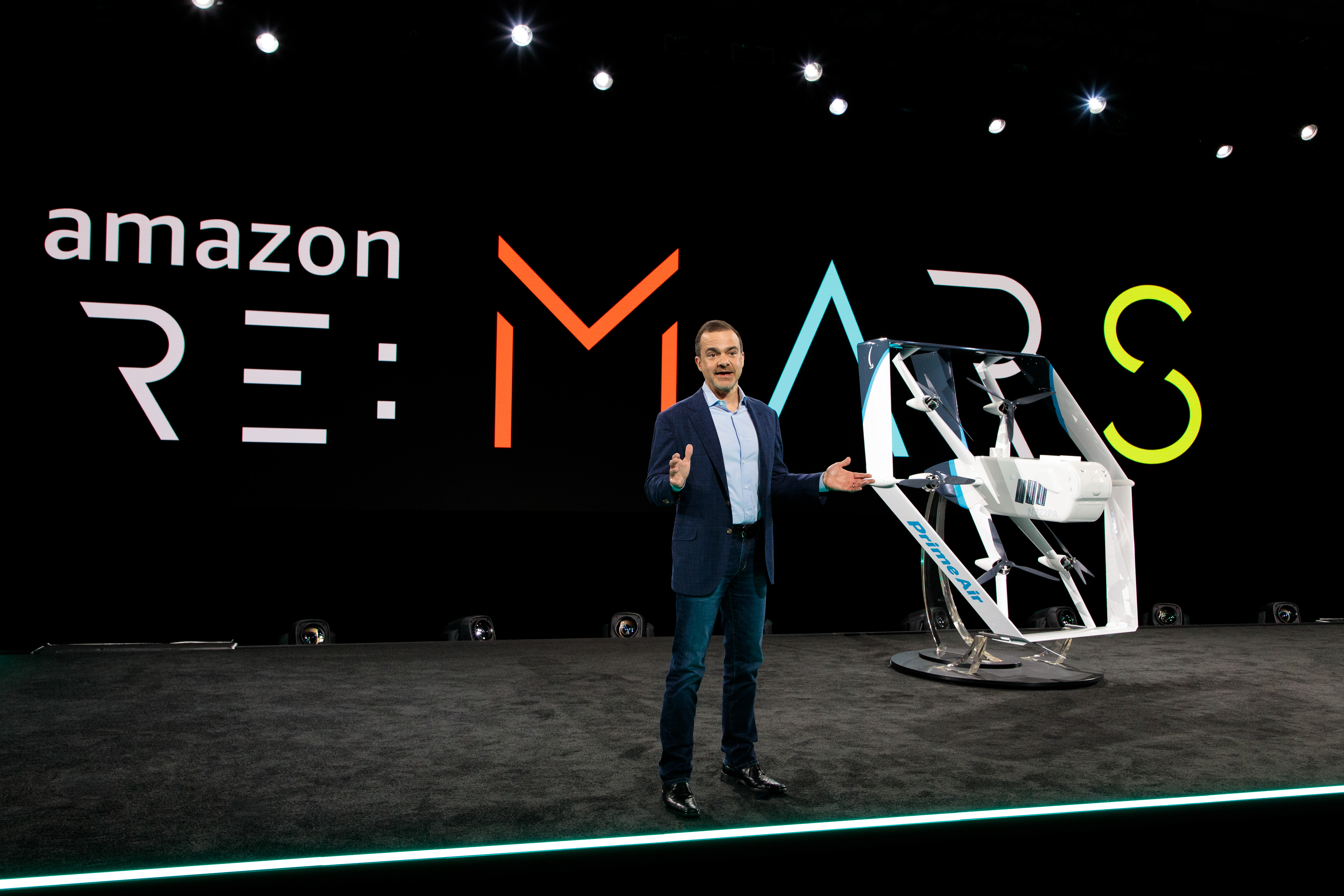St. Paul gave us the idea that there are several heavens, a layered set of spiritual levels increasingly sublime with altitude. That’s why there’s a “seventh heaven” of love, tranquility and bliss. Then there are earthly regulations to consider.
The FAA’s approval meets with Amazon’s approval. “We’re excited about Prime Air — a future delivery system from Amazon designed to safely get packages to customers in 30 minutes or less using unmanned aerial vehicles, also called drones. Prime Air has great potential to enhance the services we already provide to millions of customers by providing rapid parcel delivery that will also increase the overall safety and efficiency of the transportation system.”
Such services will be limited to the range available with drones.
One such unit, introduced by Jeff Wilke (Chief of Consumer Business) at Amazon’s re:MARS Conference (Machine Learning, Automation, Robotics and Space) last year, seems large enough to pick up more than the five pounds listed in Amazon’s goals. Wilke describes its abilities in an Amazon blog entry.
The drone’s design includes shrouded propellers, necessary to protect small children and animals at the drop zone, and perhaps grabby adults anxious for their new sneakers.
A video of Amazon’s first delivery using a different aerial vehicle shows an idyllic country setting and a clearing large enough to ensure safe drop-offs.
How this might work for suburban housewives and their broods requires some preparation by the home’s occupants. Wilke’s blog entry explains the necessities. “For the drone to descend for delivery, we need a small area around the delivery location that is clear of people, animals, or obstacles. We determine this using explainable stereo vision in parallel with sophisticated AI algorithms trained to detect people and animals from above.”
In Jeremy Clarkson’s depiction, one might want to lock that dog in the garage until the drone has departed. In the meantime, artificial intelligence algorithms will help detect power, telephone and clothes lines as the drone makes its descent on the pre-marked landing zone.
Amazon is trumpeting its intention to make the company emission free within the next decade, and to achieve “Shipment Zero, the company’s vision to make all Amazon shipments net zero carbon, with 50% of all shipments net zero by 2030.” This aspect of the program would certainly be welcome.
This could be a truly disruptive technology, with social and economic consequences might be felt by having fewer driver jobs for human intelligence platforms. Ultimately we might see massive unemployment and limited need or opportunity to leave our dwellings. What will happen when the sky is dark with drones and we have no meaningful ways of making our homes our own private fulfillment centers?

